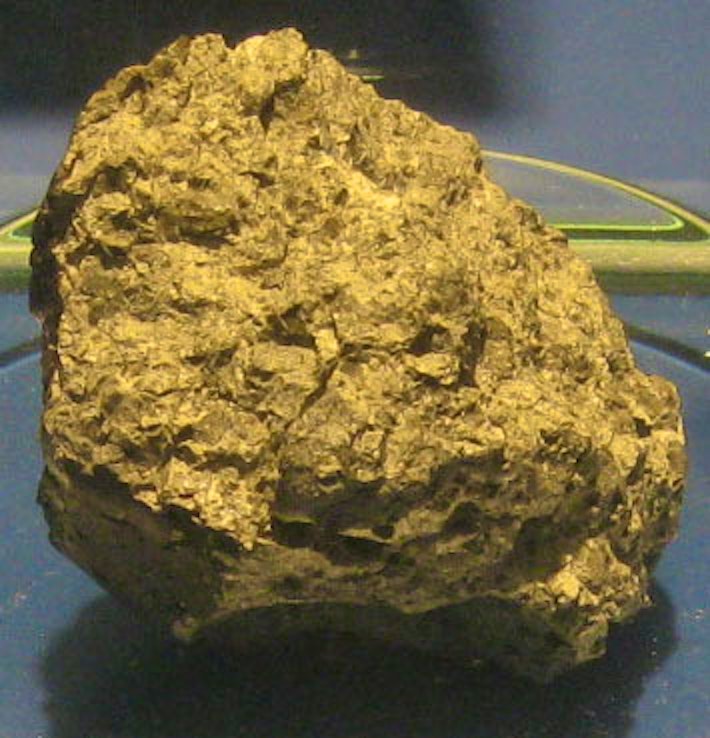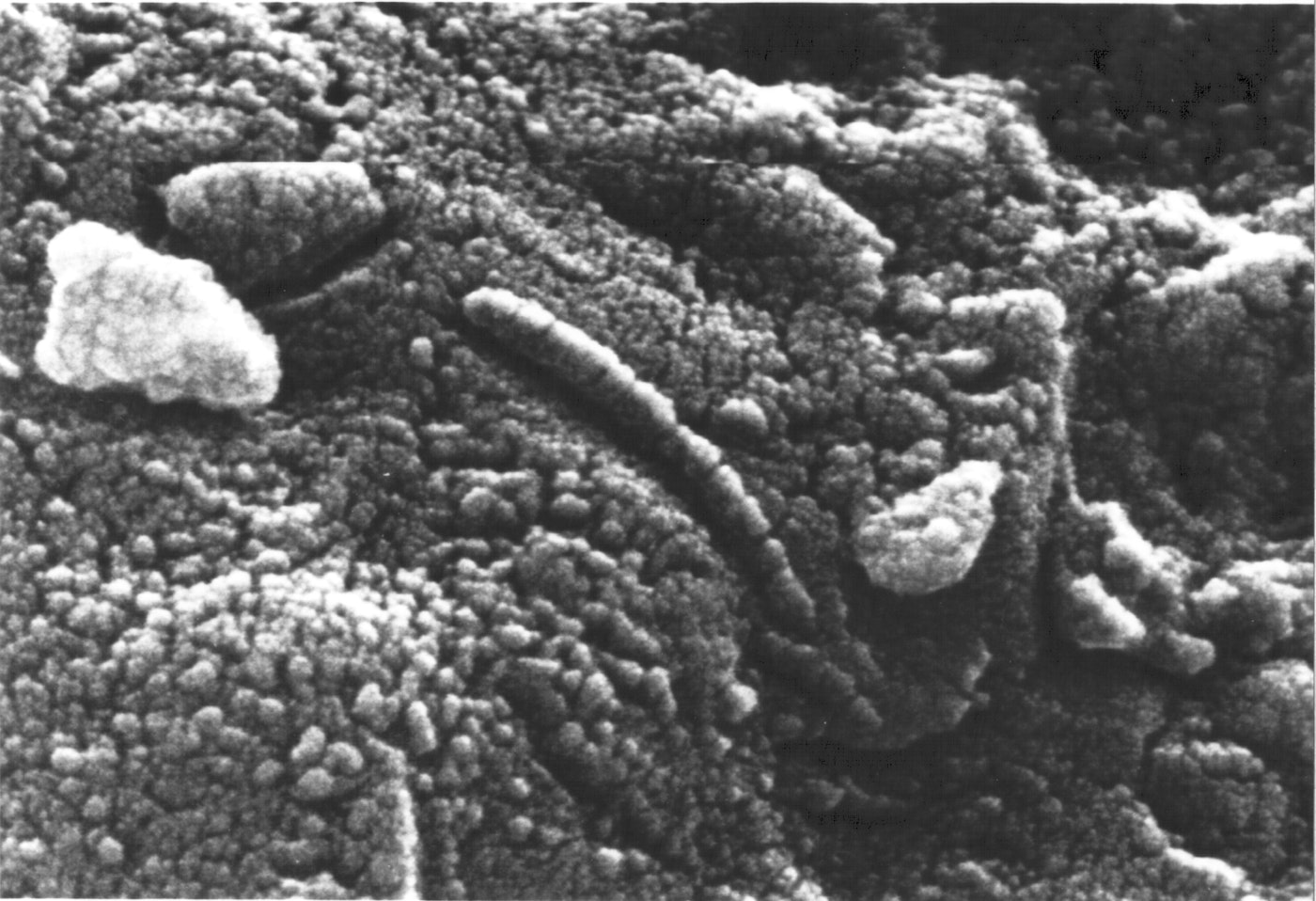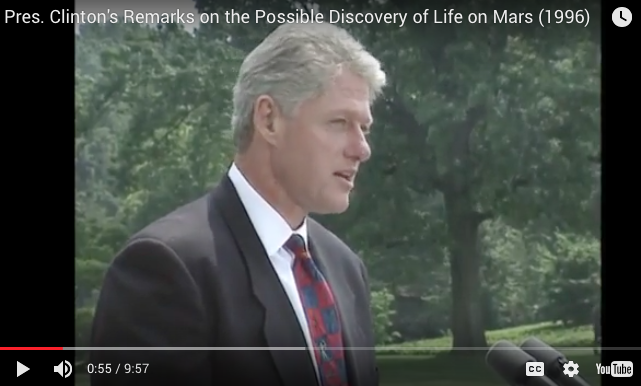With a short 1996 speech, the President of the United States changed everything.
The search for extraterrestrial life didn’t get serious in America until Bill Clinton took over the White House. The science was real, but the public perception was that it was X-Files nonsense so, while physicists built particle accelerators, the scientists investigating whether or not we’re alone in the universe scraped by on small amounts of funding. There was little support from the government or other institutions typically responsible for cutting checks.
That all changed one afternoon, 20 years ago, when President Clinton gave a short speech about an unusual Martian meteorite. It was the first time a sitting president had used an executive office forum to discuss aliens. In just a few minutes, extraterrestrial investigators were granted a legitimacy they’d spent centuries trying to grasp.
The prelude to that speech was fascinating. In December 1984, U.S. meteorite hunters found a strange 4.3 pound rock in Allan Hills, Antarctica (an ice-free region that’s home to an unusual amount of meteorites). This particularly rock, ALH84001, is presumably 4.091 billion years old and one of the oldest objects in the solar system to have ever made its way to Earth.

Scientists think it came from Mars, after another meteorite strike ejected it into space 17 million years ago. When you take into account its age — and the fact that ancient Mars is thought to have been teeming with lakes and oceans of liquid water — ALH84001 presented itself as a rare opportunity to answer the question of whether there was ever life on Mars.
How so? Any rock can act as a potential fossil to that preserves old biology — including microscopic bacteria. If Mars once possessed bodies of water that could have encouraged the evolution of life, there’s a good chance that rock would possess signs of those old biological markers.

On August 6, 1996, after years of analysis, NASA scientists led by David McKay published a study in the journal Science that pushed that idea to a pitch. Microscopic images of the ALH84001 showed off structures that seemed to look like primitive bacterial lifeforms — nanobacteria no bigger than 100 nanometers in diameter. At the time, this was smaller than any cellular life we had ever known.
That speculation was enough to persuade President Clinton to hold a televised announcement and comment on the event the following day. At 1:15 p.m., joined by White House science and technology adviser Jack Gibbons, Clinton went outside to the South Lawn of the White House and delivered a few remarks. He said, in part:
“This is the product of years of exploration and months of intensive study by some of the world’s most distinguished scientists. Like all discoveries, this one will and should continue to be reviewed, examined and scrutinized. It must be confirmed by other scientists. But clearly, the fact that something of this magnitude is being explored is another vindication of America’s space program and our continuing support for it, even in these tough financial times. I am determined that the American space program will put its full intellectual power and technological prowess behind the search for further evidence of life on Mars.”
Clinton emphasized the need to study something like this slowly, but presented an optimistic outlook at the possibility of discovering life originating from another world.
So what became of ALH84001? Well … nothing really? Subsequent analysis didn’t prove or disprove anything. A 2009 study suggested that more of what we knew about Mars helped strengthen the notion that life could have existed on the red planet, while other research cautioned against using morphology alone (without proper biochemical analysis) as a way to determine if something was fossilized life or not.
To this day, we don’t know if those microscopic structures on the meteorite are signs of life or not. In science, nothing is certain until it’s been empirically proven.
Still, Clinton’s speech was nothing short of groundbreaking. People didn’t seriously talk about the possibility of life on other planets in 1996. Clinton’s remarks broke that barrier — even for the scientific community. As Sarah Sloat wrote in a retrospective piece about the 1997 film Contact for Inverse, “the work that [astronomer Eleanor] Arroway portrays in the film is finally getting its due as a respectable field of science. Contact has proven to be prescient in 2016.”
Indeed, we have a presidential candidate — the other Clinton, Hillary — voicing enthusiasm for alien research. We have scientists from around the world holding conferences to figure out better ways to search for extraterrestrials, and figuring out what to do after we might find them. The question seems to be much less an if — and more of a when and how. All things considered, Bill Clinton may have inadvertently allowed space science to make a giant leap forward for life of every kind.

































Leave a Comment
You must be logged in to post a comment.